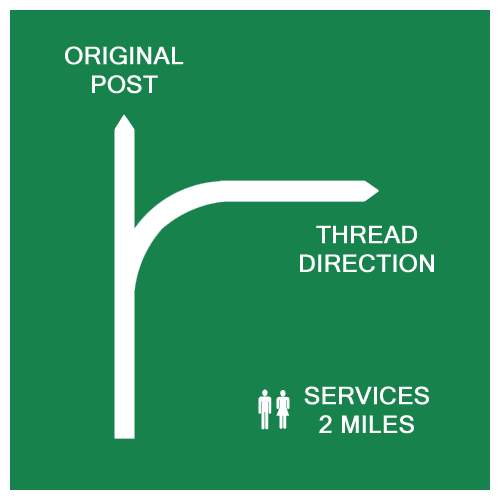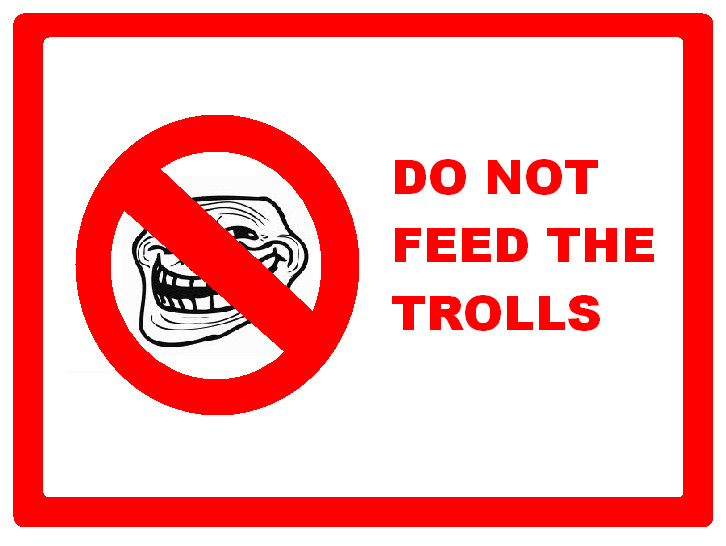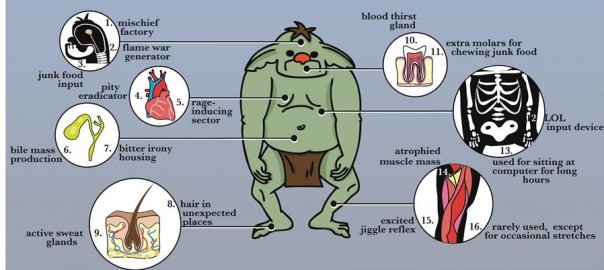The other day I heard future Hall of Fame basketball coach Tom Izzo talk about the impact of internet trolls on his players while doing an interview with ESPN Radio.
Yeah, trolls are such a big deal that he has to teach 18 year old basketball players how to deal with foul mouthed fans.
In the past year we’ve seen Popular Mechanics turn off comments on their website completely. “Another, similarly designed study found that just firmly worded (but not uncivil) disagreements between commenters impacted readers’ perception of science.”
Huffington Post radically altered their comment system to tackle their troll problem. ESPN.com moved to Facebook comments when trolling became such a massive problem. And, more recently, YouTube changed the way comments are handled, linking them to a Google+ account.
So what is a troll, exactly? There are two easy descriptors of an internet troll. First there is the troll, a person who hides his comments behind a [perceived] veil of anonymity. Many trolls go by an alias that they use over and over again on the same blogs, forums, and news websites. They usually take it a step further by using an anonymous email account, as well. Second is the trolling, the behavior that drives internet communities nuts. It’s generally someone who wants to create negative conversation either on or off topic.
Why do people troll? For some, the [perceived] power of [being perceived to be] anonymous frees them to unleash their inner jerk. For others, they just have a lot of opinions and think they can create conversation by trolling. For still others– the casual troll– they are just ignorant that their comment has impact on an online community.
I suppose there are lots of reasons for trolls and trolling activity.
As a administrator of some internet communities I’ll share this little insight: All admins have a love/hate relationship with trolls. They can be tremendously annoying and divisive. But they do generate a lot of traffic and page views.
When you start thinking about the dopamine cycle of responding to comments and getting notifications, trolls drive lots and lots of traffic because you are compelled to defend yourself, you are compelled to shut that person up, and you are compelled to not give up despite what your reasonable self is telling you to do. As a human administrator… I kind of hate trolls. But as an online community administrator, they are like prostate cancer… they are a cancer you might not have to deal with right away. They can be great for business.
Rest assured– ESPN, HuffPo, Popular Science, and the rest… they only diviated from their comment policies because things got toxic and beyond what human moderation could manage.
Adam’s Guide to Trolls
If you moderate a community or if you are a blogger you need to know what to do with trolls. Here’s 5 things I do.

Step One – Redirect them back on topic. Most trolls want to see how you’ll handle it. I’ve found that if I redirect them back on topic they’ll see that I’m active as a moderator. So I’ll hear them, I’ll see what they are doing, and I’ll politely push them back towards the topic at hand. Lots of times that’s all you have to do. If not, I move on to Step Two.

Step Two A – Assume the best in them, acknowledge the good in what you see, but firmly point back to engaging on the topic. (Maybe even point them to a comment policy if you have one.) I’ve found that this will either correct the trolling behavior or sometimes just scare them off… they’ll find another website to troll easier than this. If not, I move on to Step Three.
Step Two B – Navigate away from the negative by focusing on the positive. I know that sounds all Oprah Winfrey, but it’s a great way to move the conversation past the trolling comments… just ignore them. Someone is trolling, ultimately, because they want attention. Don’t give them attention and reward the conversation for staying on topic with your attention. If that doesn’t help, move on to step three.
Step Three A – Ask them to step outside. By this time I’ve already identified who they are. They are 4-5 comments in, I’ve got them flagged as a troll, I’m on the lookout for them. If they continue the trolling behavior I simply ask them (publicly) to move the conversation to another platform like email, phone call, or Skype. Of course I know they won’t do that. (And the few who take you up on it will back-pedal like crazy!) If they do engage with me in another avenue I’ll happily talk about the topic at hand… but I always ask them to partner with me instead of fighting against me. You’d be surprised at how much that changes the tone. If this doesn’t work, then we move to Step Four.
Step Three B – Stop them from posting on your websites without moderation. If you are using WordPress, you can (and should) add this person, their email address, their pseudo names, and IP address to your discussion settings. In other words, you don’t want that persons trolling to go public every time they post. And if your post/thread is popular there are likely lots of people subscribing to it, so you don’t want that troll to get all that unedited fun. Doing this usually stops the troll, if not… proceed to Step Four.

Step Four – Expose the troll to light. Most trolls aren’t really anonymous. (There’s no such thing as internet anonymity, only perceived anonymity.) They are just hiding behind a screen name that’s relatively easy to track down. So at this point what I’ll do is take the 5 minutes to figure out who they are and do a little public shaming. Google is your friend in this endeavor. Most trolls will use the same “name,” anonymous handle, or email address over and over again. A quick Google search will tell you more about them, where they troll, etc. I find it takes me 5 minutes or less of sleuthing to find out who they are. Just like the mythical troll, they live a lonely life– one that leaves them looking for real human interaction. So somewhere they’ll use their troll name/email address to link to their own website or Facebook or Twitter or job or work email address. That’s when I start responding to them on the website by their real name or making references to things that happen in their city/town. If that doesn’t work, I’ll post on their Facebook wall or publicly call them out on Twitter as being a troll. When I do this I’m communicating clearly to them… I know who you are, I’m not afraid of you, and I will take things to an even deeper level if I want.

Step Five – Troll the Troller. A very tiny percentage of trolls are really, truly, in need of something more aggressive. So I’ll block them from the site, leaving comments, etc. I usually take it a step further and block their IP address from my server. (either on the server itself or via CloudFlare.) And I’m not opposed to calling them out publicly, by name, for their trolling behavior. I’ve done that on Twitter and Facebook before… it sends a message. I will also block them on social media sites, I’ve even set-up filers so that any emails I get from them are immediately deleted and I’m just not bothered with them anymore. There are billions of people on the planet, you can’t please them all. The point of this step is to get rid of them for good.

Leave a Reply